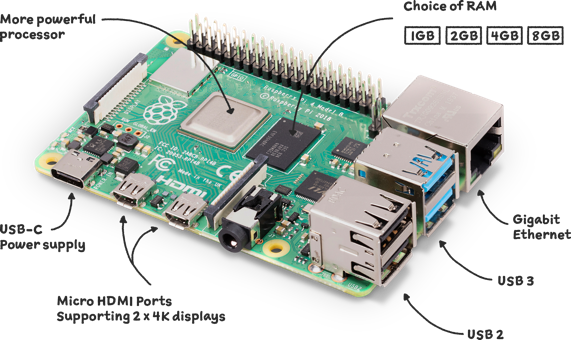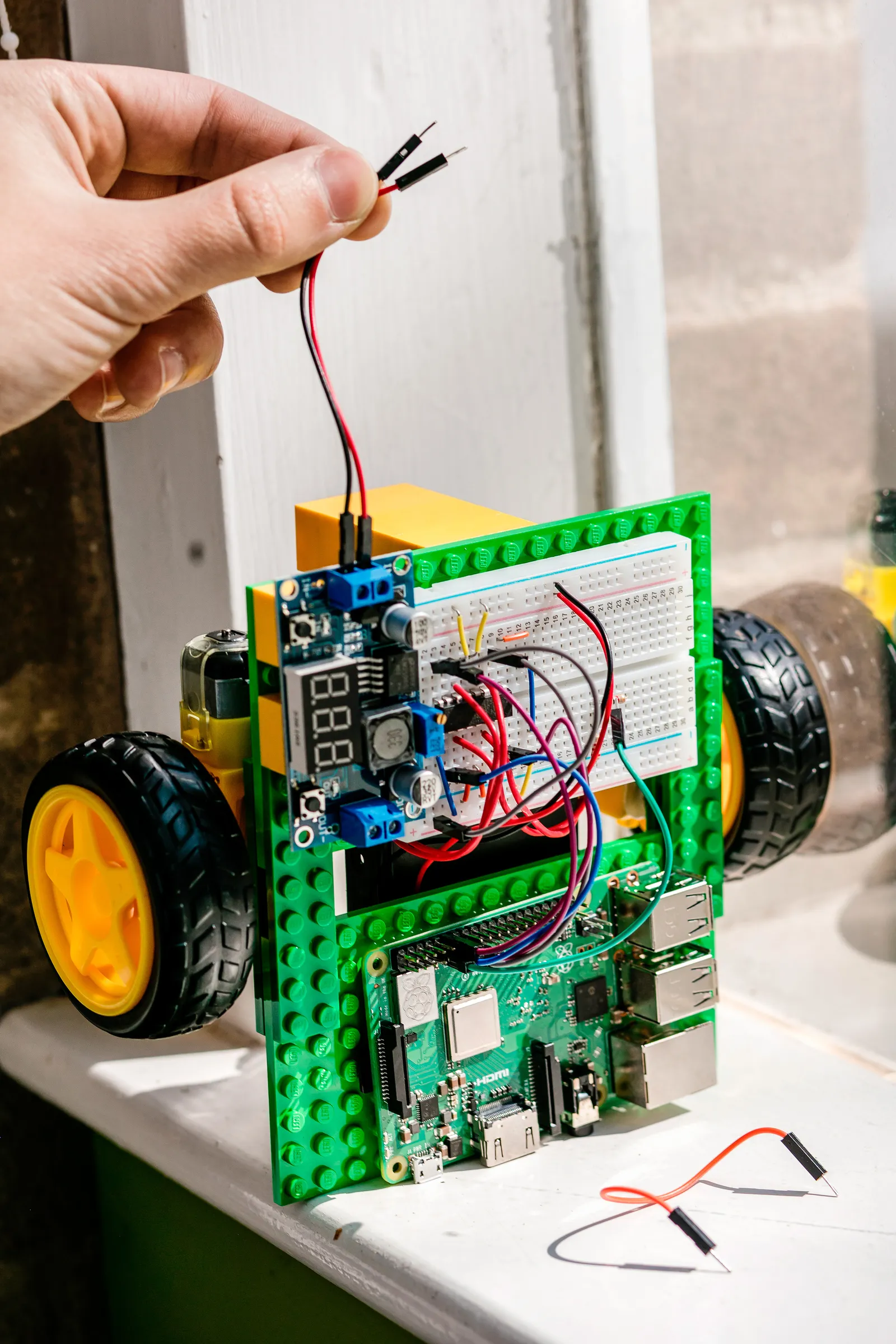Raspberry Pi
What is Raspberry Pi?
The Raspberry Pi is a small, affordable, single-board computer developed by the Raspberry Pi Foundation. Designed primarily for educational purposes, it has gained immense popularity among hobbyists, educators, and professionals for its versatility and power. The device features a broad range of connectivity options, including USB ports, HDMI outputs, GPIO (General Purpose Input/Output) pins, and support for various programming languages, making it an excellent platform for both learning and practical applications.

Key Features of Raspberry Pi:
-
Compact Size: The Raspberry Pi's small form factor allows it to fit into various projects and enclosures, making it ideal for portable applications.
-
Affordable: Its low cost enables easy access for students and hobbyists, promoting STEM education and experimentation without significant financial burden.
-
Versatile Connectivity: The GPIO pins enable interaction with sensors, motors, and other electronic components, allowing users to create complex systems.
-
Rich Ecosystem: A thriving community and extensive documentation support users in building projects, from simple circuits to advanced robotics.
-
Multiple Models: Various versions (e.g., Raspberry Pi 4, Raspberry Pi Zero) cater to different performance needs, allowing users to select the right model for their projects.
Robotics with Raspberry Pi
How Robots Are Made Using Raspberry Pi
The Raspberry Pi has become a fundamental tool in the development of robots, thanks to its flexibility and ease of use. Here’s a breakdown of how it contributes to robotics:

1. Control System
At the heart of many robotic systems is the control unit, which manages the robot's operations. The Raspberry Pi serves as the brain of the robot, executing algorithms and making decisions based on input from various sensors. Users can program the Pi using languages like Python, C++, or Java, allowing for complex control systems that govern motion, sensor data processing, and more.
2. Sensor Integration
Raspberry Pi supports a variety of sensors, including ultrasonic, infrared, cameras, and more. These sensors provide critical data about the robot's environment, such as distance to obstacles, temperature, or light levels. The GPIO pins allow easy connections to these sensors, enabling the Raspberry Pi to read data and react accordingly.
3. Motor Control
In robotic applications, motors are necessary for movement. The Raspberry Pi can control motors using motor drivers, such as the L298N. By sending signals through the GPIO pins, the Pi can control the speed and direction of DC motors or stepper motors, enabling precise movements of the robot.
4. Data Processing and Decision Making
With the Raspberry Pi's computational power, it can process data from sensors in real-time and make informed decisions. For instance, a robot equipped with an ultrasonic sensor can use the Raspberry Pi to detect obstacles and navigate around them, all while adjusting its path based on changing conditions.
5. Communication and Networking
Raspberry Pi can connect to the internet or local networks, allowing robots to communicate with other devices. This capability opens up possibilities for remote control, data sharing, and even cloud-based processing. Robots can send data back to a server for analysis or receive instructions from remote users.
6. Vision and Image Processing
With the addition of a camera module, Raspberry Pi enables vision capabilities. This allows robots to interpret visual data, perform tasks like object detection, and navigate based on visual input. Libraries such as OpenCV can be integrated for more advanced image processing tasks.
7. Prototyping and Experimentation
Raspberry Pi is an excellent platform for prototyping robotic projects. Its low cost and accessibility encourage experimentation, enabling users to test different configurations, sensors, and algorithms. The ability to rapidly iterate designs makes it a favorite among students and developers.
8. Community Support and Resources
One of the most significant advantages of using Raspberry Pi in robotics is the strong community support. There are countless tutorials, forums, and projects shared online, allowing newcomers to learn from experienced developers. This collaborative environment fosters innovation and knowledge sharing.
9. Applications in Education
In educational settings, Raspberry Pi-based robotics projects provide students with hands-on experience in programming, electronics, and engineering principles. By building robots, students learn problem-solving skills, critical thinking, and collaboration, all while engaging with technology in a meaningful way.
Conclusion
The Raspberry Pi serves as a powerful and accessible tool for robotics enthusiasts, educators, and developers. Its flexibility, affordability, and extensive community support make it an ideal choice for building various robotic systems. From simple hobby projects to complex autonomous robots, the Raspberry Pi enables creativity and innovation in the field of robotics, helping to shape the future of technology.